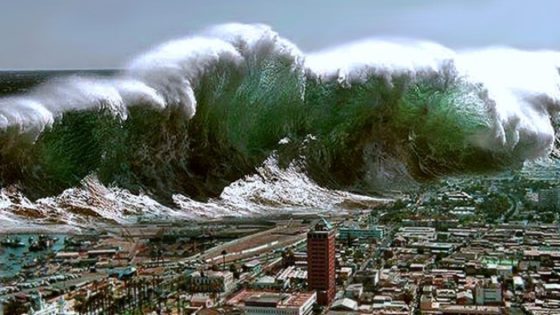Geologists have found anomalies under the Cascadia fault line off the West coast of the United States. Scientists say pieces of mantel have been discovered “rising up” from underneath the underwater fault line.
New data from the seismometers monitoring the Cascadia fault line helped University of Oregon researchers identify seismic anomalies at both ends of the fault where they believe pieces of the upper mantle are rising and modulating earthquake activity.According to Sci-Tech Daily, these anomalies may influence the location, frequency, and strength of earthquake events along the U.S. Pacific Northwest.
There is now four years worth of data on the Cascadia Subduction Zone. The data has come from 268 seismometers on the ocean floor and several hundred on land. The 620-mile subduction zone, which hasn’t experienced a massive lengthwise earthquake since 1700, is where the Juan de Fuca ocean plate dips under the North American continental plate. The fault zone stretches just offshore from northern Vancouver Island to Cape Mendocino in northern California.
These newly discovered anomalies, which reflect regions with lower seismic wave velocities than elsewhere beneath the fault line, point to pieces of the Earth’s upper mantle that are rising and buoyant because of melting rock and possibly elevated temperatures, said Miles Bodmer, a University of Oregon doctoral student who led a study now online as an accepted paper by the journal Geophysical Research Letters. “What we see are these two anomalies that are beneath the subducting slab in the northern and southern parts of the subduction zone,” Bodmer said. “These regions don’t have the same behavior as the entire fault. There are three segments that have their own distinct geological characteristics. The north and south segments have increased locking and increased tremor densities.”
“If they [the San Juan de Fuca and North American continental plates] are stuck together tightly, as is the case here, they are building up stress, and you have the potential for the release of that stress, or energy, in large earthquake events,” Bodmer said. And some government agencies, such as FEMA have been preparing for earthquakes on this fault line and a subsequent tsunami that could devastate millions on the west coast. Although these findings won’t help predict earthquakes on the fault line, they could help prepare those living in the dangerous areas.
The junction of the Cascadia-San Andreas faults contains a lot of complexity and is the most seismically active part of contiguous North America. Seismic history also shows more earthquake activity in the Puget Sound area than in central Oregon. Both regions accumulate energy that eventually is released in large earthquakes, said co-author Douglas R. Toomey, a seismologist in the UO Department of Earth Sciences. Toomey is also a lead investigator for the Oregon component of ShakeAlert, the West Coast early warning network.
“Our study is worse news for Portland northward to Seattle and for southern Cascadia, but central Cascadia is not off the hook,” said Toomey. “More frequent earthquakes to the north and south are seen in historical seismicity patterns. This research helps to understand that.”
Courtesy of SHTFplan.com

Your Daily Briefing:
Fight Online Censorship!
Get the news Google and Facebook don't want you to see: Sign up for DC Dirty Laundry's daily briefing and do your own thinking!

